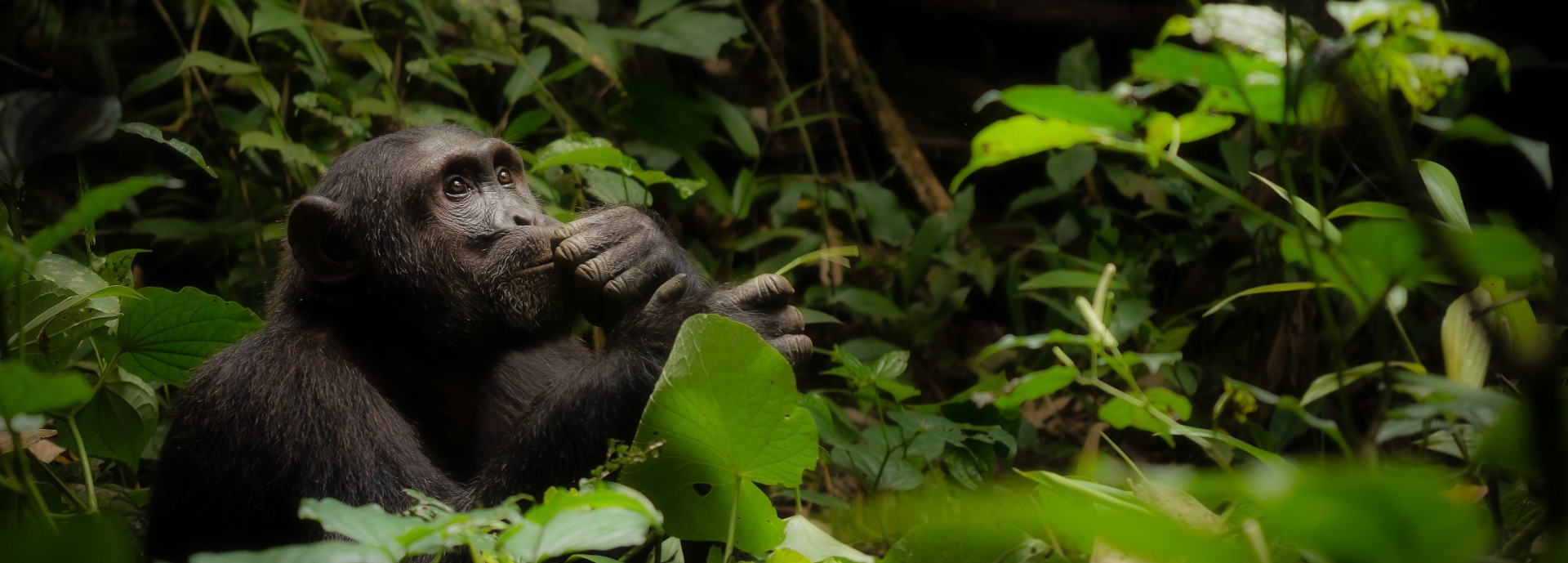A University of Stirling academic has informed a new international study researching chimpanzee behaviour and its implications for understanding the drivers of human evolution.
Dr Kathryn Jeffery, of the Faculty of Natural Sciences, is part of the international collaboration behind the 'Environmental variability supports chimpanzee behavioural diversity' study, published in renowned journal Nature Communications. It reveals that the further away from seasonally stable, forest refugia that chimpanzees live, the more likely they are to have developed a greater number and range of behaviours.
The University of Stirling is a pioneer in ape ecological research, having established the Station d’Etudes des Gorilles et Chimpanzes (SEGC) in Lopé National Park, Gabon, in 1983. The centre is now a world-renowned site for research into tropical ecology.
The University has continued to collaborate with numerous research institutions to study great ape ecology and behaviour in the region. This includes the Max-Plank Institute’s Pan-Af programme, which looks at the evolutionary drivers of chimpanzee behavioural diversity.
This latest research compares differing behaviours among chimpanzee populations at a variety of locations across West and Central Africa.

Dr Kathryn Jeffery, of the faculty of Natural Sciences at University of Stirling
Dr Jeffery – who was based full-time in Gabon between 2004 and 2017 – said: “We have known for many years that chimpanzees in Lopé National Park use tools to hunt for ants, extract honey, and drink water, but some of the iconic behaviours displayed by West African chimpanzees, such as nut cracking, are absent from the Lopé population.
“This study sheds light on why that may be and indicates that, as chimps dispersed away from predictable, stable environments, there may have been a greater need for them to evolve novel behaviours to help them adapt to new, perhaps harsher habitats. Gaining an insight into this area can strengthen our understanding of how resilient remaining chimpanzee populations might be in the face of increasing conservation threats.”
The study also provides evidence to support the long-accepted idea that human behaviour has evolved in response to changing environmental conditions, and that moving from rainforests into open, dry habitats was a driving force for evolution.

